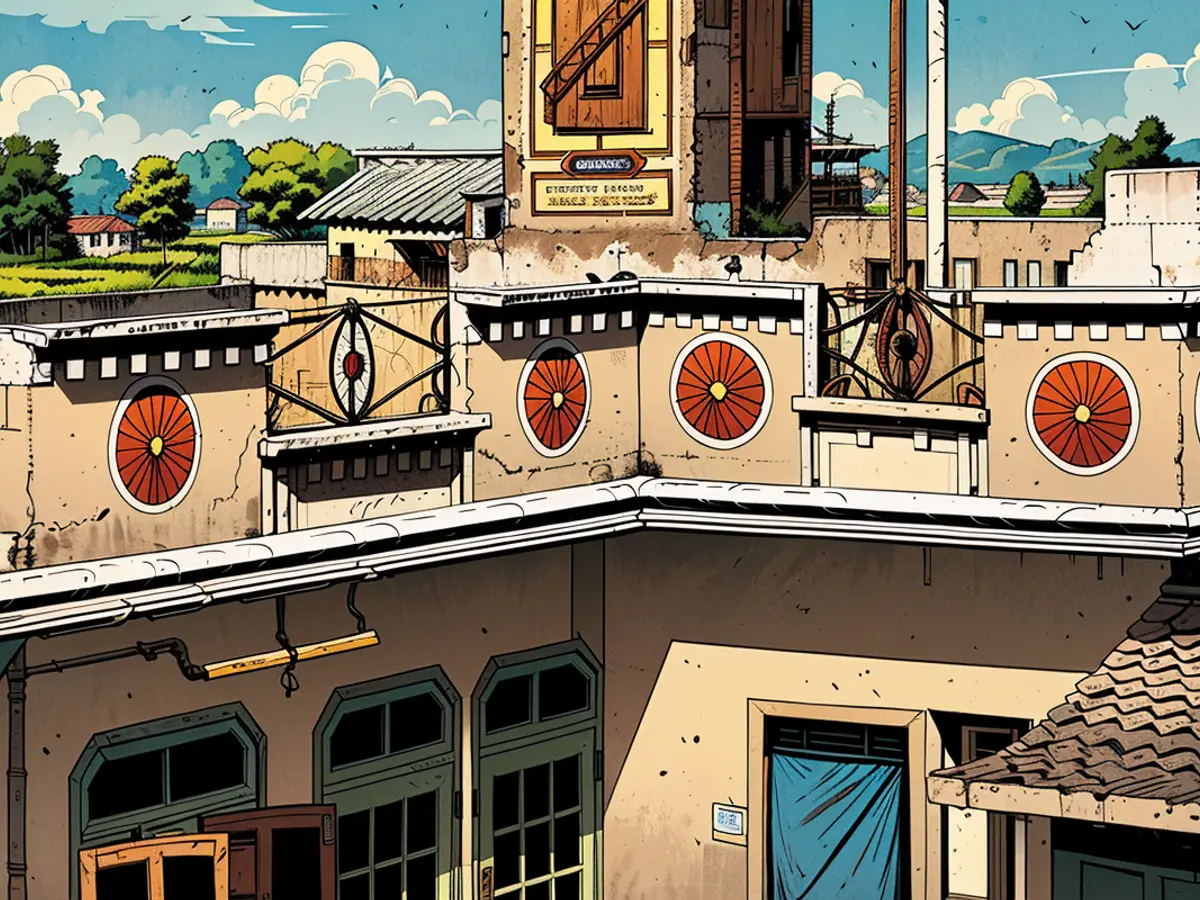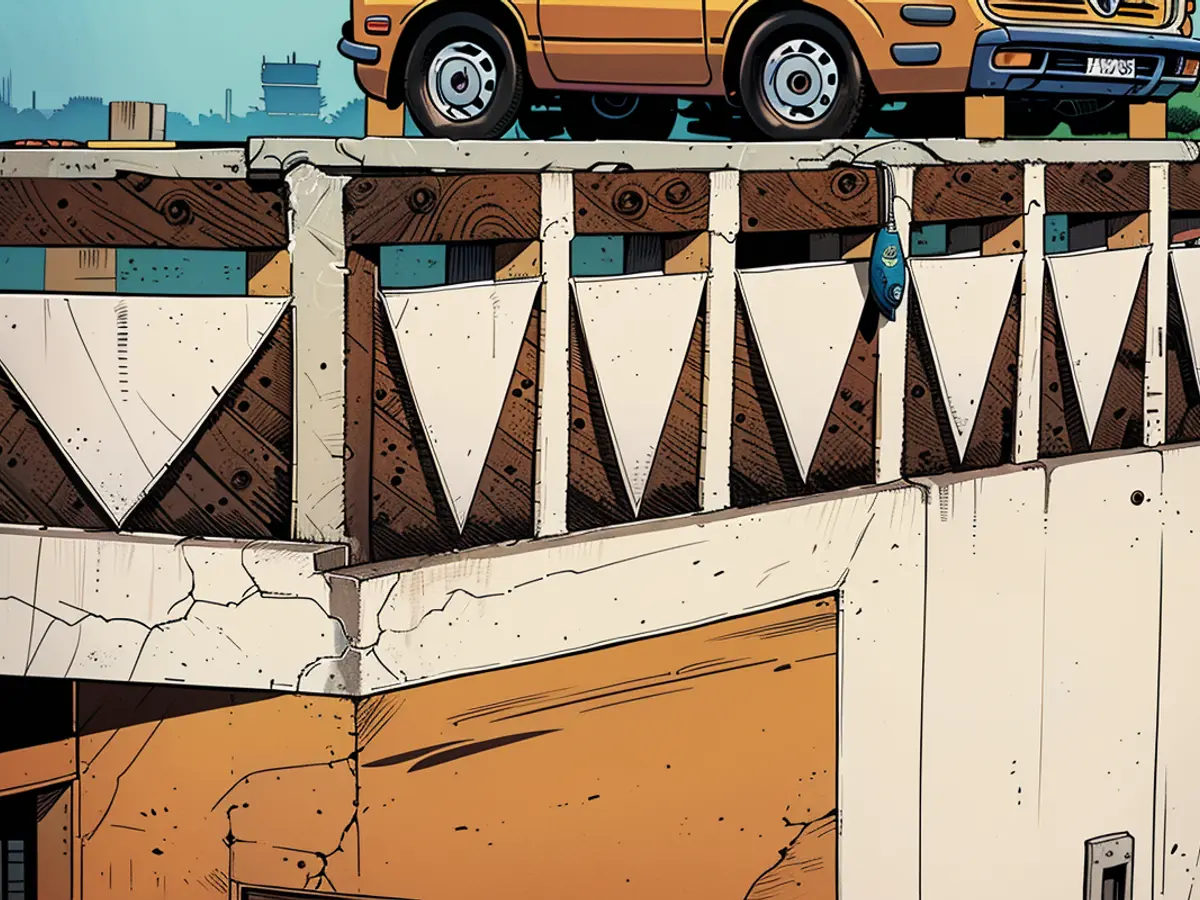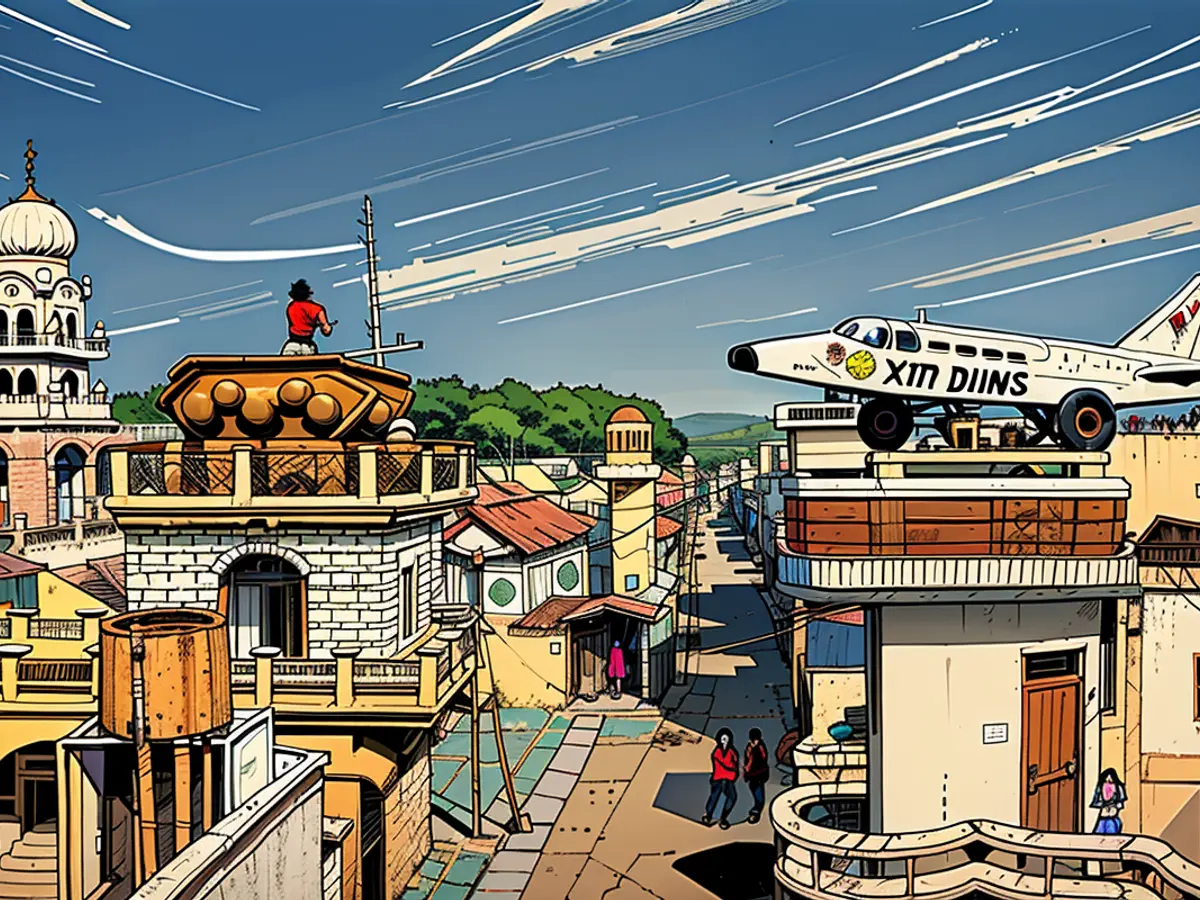The Indian villages with rooftop sculptures of planes, tanks and cars
Though the designs could have been plucked from an amusement park, they were actually elaborate rooftop water tanks of private homes. Vora’s images of this phenomenon — a vernacular tradition of architectural icons that sprung up across the across the northwestern state some five decades ago — became a multiyear project that the Mumbai-based photographer is now exhibiting at Les Rencontres d’Arles in France this summer. He visited 150 villages and photographed hundreds of these designs.
The ostentatious décor is “a brilliant idea combining form and function,” Vora said in a phone call with CNN. The first time he noticed the water tanks while on assignment in the region in 2014, he was “amused, like anybody would be seeing this kind of sculpture,” he explained. “But then I realized, as an architecture photographer, what amazed me was the integration of the sculptures on the houses, built by local artisans.”
Crowning the tops of these homes, the unusual status symbols are often commissioned by Indian emigrants who return home during the year, or by their families who still live in the region. Some are functional water tanks while others sit on top more traditional plumbing designs. Each tell a specific story, he explained.

“If somebody plays sports, they’ll put up a football there, if they are a chef they will put a pressure cooker... if somebody likes a nice drink, they’ll put a bottle of whiskey,” he explained. Planes, tanks and cars became popular motifs, too. “All their personal aspirations are embodied in their houses.”
Last year, Vora published a book, “Everyday Monuments” that features images from some the villages he visited and brings together texts from architectural, scholarly and curatorial experts to explore the unique tradition. Through their research, they approximate that there are around 30 artisans in the region who work with homeowners and their families via word of mouth to create these lively sculptures.
Diasporic icons
Vora came across the buildings by chance, as he visited a gurdwara — a Sikh temple — in the village of Talhan while working on a commissioned photo story about global migration. Known as Hawaijahaj, or “Airplane,” gurdwara, visitors bring offerings of model aircraft in hopes that they will be blessed with swift visa approval to leave India. He heard that many who were successful eventually returned to their villages to add planes to the exteriors of newly built homes, he explained.
Over the course of six trips from 2014 to 2019, Vora began to better understand the full scope of the trend. It had begun sometime in the 1970s, as Punjabi diasporic communities flourished in Canada, the United Kingdom and the United States, among other countries. As the popularity of custom-designed water tanks grew, local builders became specialized in their craft. The favored icons tend to shift in popularity over the years — when the country began manufacturing its popular Maruti van, for example, in the 1980s, it began appearing on homes, too. He also observed how architectural styles from different countries began to mix into the villages as owners brought back ideas from abroad to unique effect.

But documenting the water tanks proved difficult when he first began. The remote areas of Punjab weren’t yet mapped by Google, he explained, so he visited villages and hoped for the best.
“Some days are lucky — you might get three or four kinds of water tanks; others, you might not get anything,” Vora said. Daulatpur Village, where multiple designs could be seen in one frame, was a rarity.
Vora doesn’t know how the tradition will grow or change as the region continues to see major shifts — especially as Indians from marginalized backgrounds gain more economic mobility and second- or third- generation immigrants amass wealth overseas.
“Will they come back to India? Will they build their own houses? Will they take care of these houses?” We don’t know,” Vora said of younger generations. “These houses are perishable if you don’t maintain them after 30 or 40 years... maybe they will disappear.”
The photographer hopes to continue to create an archive of Punjab’s distinctive architectural legacy — and he’ll keep looking out for a home that bears the icon of what he would choose if he were commissioning a design. “It would have to be a camera,” he said with a laugh. After traveling more than 3,500 miles, he has yet to spot one.
The unique architectural style of these homes, with their water tanks shaped like various objects, can be seen as a reflection of the homeowners' personal interests and aspirations. For instance, a football might adorn the roof of a house belonging to a sports enthusiast, while a chef might opt for a pressure cooker atop their home.
The style of these diasporic icons, a vernacular tradition influenced by Punjabi diasporic communities abroad, evolves over time, with popular motifs shifting in response to changing trends and cultural influences.








